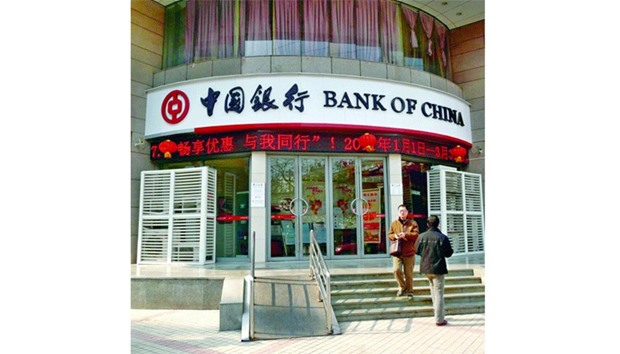Chinese banks extended 1.22tn yuan ($181bn) in new loans in September, well above expectations and capping a record nine-month lending spree despite growing concerns about the risks from the country’s ballooning debt.
Much of the loan growth in recent months has been driven by a rapid rise in home mortgages, as China’s sizzling housing market drives a buying frenzy that authorities are now trying to clamp down on without triggering a price collapse.
China’s credit growth has been “very fast” by global standards, and without a comprehensive strategy to tackle the debt overhang there is a growing risk it will have a banking crisis or sharply slower growth or both, the International Monetary Fund said in a working paper last week.
Analysts polled by Reuters had expected new lending to increase modestly to 1tn yuan in September, after more than doubling in August to 948.7bn yuan.
Loans over the first nine months of the year were a record 10.16tn yuan ($1.51tn), according to central bank data yesterday.
In September alone, new housing loans to individuals totalled 475.9bn yuan, some 76% higher than the same period last year, Ruan Jianhong, a central bank official said in a news release.
Personal mortgages accounted for 39% of all new lending last month, based on Reuters calculations using central bank data.
In a further sign that authorities are keeping the system awash with money to support economic growth, broad M2 money supply grew 11.5% in September from a year earlier, slightly below forecasts but up from August’s 11.4% rise.
Outstanding yuan loans grew 13% by end-September on an annual basis.
Outstanding loans had been forecast to rise 12.9%, while money supply was seen up 11.6%.
China’s debt has soared to 250% of GDP and the Bank for International Settlements (BIS) warned in September that a banking crisis was looming in the next three years.
“Credit booms, even stealth mini ones, have a stair-step effect on the credit-to-GDP ratio, which at 250% China can ill afford,” Tim Condon, ING’s chief Asia economist, wrote in a recent note.
However, Condon believes the recent credit boom driven by lending for government debt swaps has already peaked. For similar reasons, Capital Economics also believes credit growth has been easing in recent months, while acknowledging that it remains rapid compared with a few years ago.
Strong lending has also been driven by Beijing’s push to have local governments participate in debt swaps, which are aimed at reducing their interest payments and freeing up more money for economic development at the municipal level.
“It will take time for this more cautious policy stance to impact economic growth,” said Capital Economics’ China economist Julian Evans-Pritchard said in a note.
“Indeed, in coming months the economy may continue to propped up by earlier policy easing.
However, a slower expansion in credit is likely to prove a major headwind to growth next year.”
Total social financing (TSF), a broad measure of credit and liquidity in the economy, rose to 1.72tn yuan in September from 1.47tn yuan in August.
TSF includes off-balance sheet forms of financing that exist outside the conventional bank lending system, such as initial public offers, loans from trust companies and bond sales.
M1 money supply, which includes cash and short-term deposits, rose 24.7% in September from a year earlier, versus August’s 25.3% rise.
A widening gap between M1 and M2 growth has fuelled concerns about a “liquidity trap” in the economy where companies remain wary of investing regardless of how much stimulus policymakers pump into the system.
Central bank Governor Zhou Xiaochuan said earlier this month that risks in China’s banking system are controllable even as bad loans increase.
But growing risks of a property bubble have reinforced expectations that the central bank will be in no rush to ease policy soon by cutting interest rates or banks’ reserve requirements (RRR) further.
“Although we expect economic growth to slow again in the fourth quarter, the (property) tightening measures taken by local governments suggest that short-term policy is now focused on reining-in the surge in home prices rather than boosting growth,” analysts at Nomura said in a note.
“Against this backdrop, room for the PBoC to further cut interest rates or the RRR this year is limited.

Chinese banks extended 1.22tn yuan in new loans in September, well above expectations and capping a record nine-month lending spree despite growing concerns about the risks from the country’s ballooning debt.
